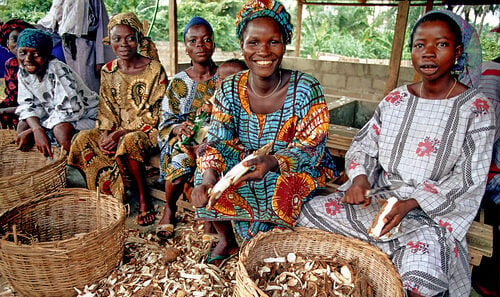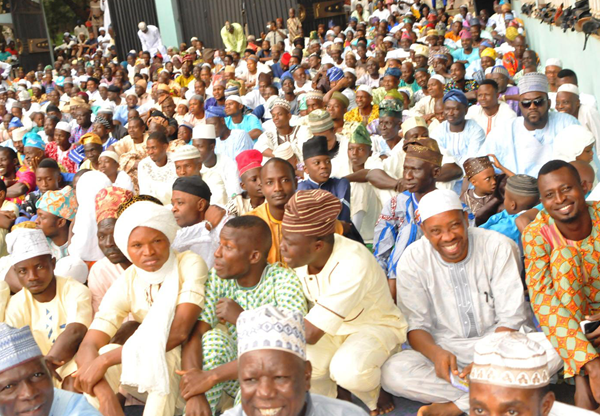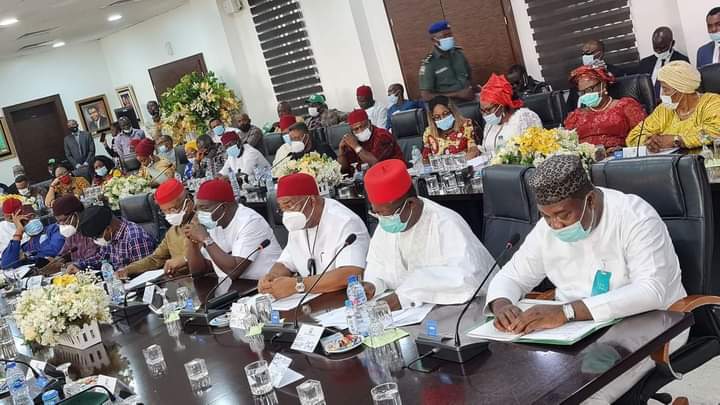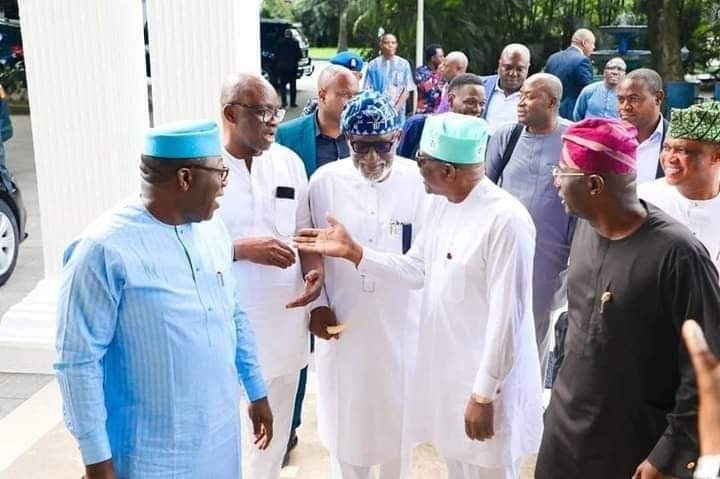File photo of Nigerian women
The gender equality movement is not novel. It began with the suffrage movement in Western cultures in the late 19th century, which sought to allow women to vote and hold elected positions. Two centuries later, the fight is ongoing, with a gloomy hope for a victory that some fear may never come.
The new World Economic Forum (WEF) report says bionic eyes, robotic farms, a Mars colony and the chance of a trans-Atlantic tunnel for mass transit are a fraction of technological inventions expected to happen before gender equality is achieved.
The report predicts that it will take up to 136 years to close the global gender gap. This is not inclusive of the $1 trillion gaps in the technology industry expected to shape the realities of our world in a few years’ time.
These findings, according to the report, are measured by progress on four key dimensions across 156 countries around the world. They are economic participation and opportunity, educational attainment, health and survival and political empowerment.
Advertisement
Although there are perceptions that the gender gap is closing globally, experts say otherwise.
“The global economic growth rate is low, especially in regards to gender growth. It will take over a century before women will be at par with their male counterparts. We should be talking about over 200 years. Thank God for the 20th and 21st-century women, they have significantly contributed to closing the gap,” Paul Alaje, a senior economist at SPM professionals and financial expert, told TheCable.
According to him, the economic reality around the world may make it difficult to achieve gender parity in 136 years as the WEF predicts.
Advertisement
“If you look at the economic reality globally, you will know that it doesn’t look good for women. In many countries around the world, males account for over 70% of economic participation and opportunities. How can equality be achieved when there is male dominance in these positions around the world?” Alaje said.
‘COVID-19 HAS REVERSED LIMITED PROGRESS’
Like with other sectors, the COVID-19 pandemic has dealt a hard blow to the fight by woman’s rights advocates.
According to a United Nations (UN) women study, the effects of the COVID-19 pandemic could reverse the limited progress that has been made on gender equality and women’s rights. The coronavirus outbreak exacerbates existing inequalities for women and girls across every sphere – from health and the economy to security and social protection.
Advertisement
Data shows that nearly 60% of women work in the informal economy, which puts them at greater risk of falling into poverty.
Mary Ikoku, a gender expert, agrees with the statistics. According to her, the pandemic is the main reason behind many gender equality disruptions.
“I think it makes a lot of sense that the gap has widened and that we may not be expecting parity soon for obvious reasons. Previously, 100 years was the predicted time to close the gap but you can see now that it has widened. What that means is that something has kicked it up and that is COVID-19 which has caused a lot of disruptions,” she told TheCable.
“Women are mostly found in the informal sector and this sector was the most hit during COVID-19. That hits the button for closure in the gap. You have someone who ordinarily has a salon, for example, but cannot provide services that will earn her money because of imposed safety measures owed to the pandemic. Although this happened mostly during the lockdown, a lot of women have found it hard to bounce back.
Advertisement
“This is purely from the economic sector. However, when you look at the benchmarks used to measure these progress, you can clearly see that we are retrogressing.”
OCCUPATIONAL GENDER SEGREGATION
Advertisement
Data from the report points to significant challenges for gender parity in the future of jobs due to increasing occupational gender segregation. According to the WEF report, only two of the eight tracked “jobs of tomorrow” clusters — people and culture and content production — have reached gender parity, while most show a severe underrepresentation of women.
“If you look at these new social media influencers and other content production jobs, most of them are women. That is the only place you will see a lot of them. In my case, I am a politician and I know the fights I have had to put up just to make my voice heard. It’s not just in my case. If you look at the political empowerment indications from the report, you will see it’s very low, I am proof of what women go through in political spaces,” Ikoku said.
Advertisement
According to the report, on the current global trajectory, it will take 146 years to attain parity in politics and a startling 268 years to close the gap in economic participation and opportunities.
“It’s hard for women to be allowed to lead organisations. When you look at the political sector, it’s almost like a taboo. You go to large-scale companies and you see men at the lead. Meanwhile, some women have the same educational qualifications as these men, and some even have higher,” Alaje said.
Advertisement
“I believe that the capacity of a person is the function of the mind and skill. Most people are still rooted in cultural beliefs that relegate the role of a leader to the man and unfortunately, we see that translating in our global economy which in turn creates disadvantages for women.”
DEALING WITH IT
The experts agree on one thing – changing mindsets and shaping cultural perceptions is the starting point.
For Alaje, the more women become financially independent and prosperous, the earlier the gap can be closed.
“The gap can only be closed quicker if more women become financially independent and prosperous. We do not only need an economic reset but also a mind reset – this is the only way we can promote equity,” he said.
According to Ikoku, creating enabling environments, advocating for gender equality and inclusion and recognising the importance of women as a focal point in nation-building are ways that the gender gap can be closed.
“Gender equality is not just a fight for women, but also a fight for national growth and development. A country can only grow when there is competition, and how can you achieve healthy competition when you overwhelm the system with a majority of one gender and leave the other out?”
Some narratives portray that the gender gap is closing globally but data entries show a backward movement on the long journey to equality.
On the current trajectory, parity is a concept that may exist somewhere in the distant future.
Add a comment






